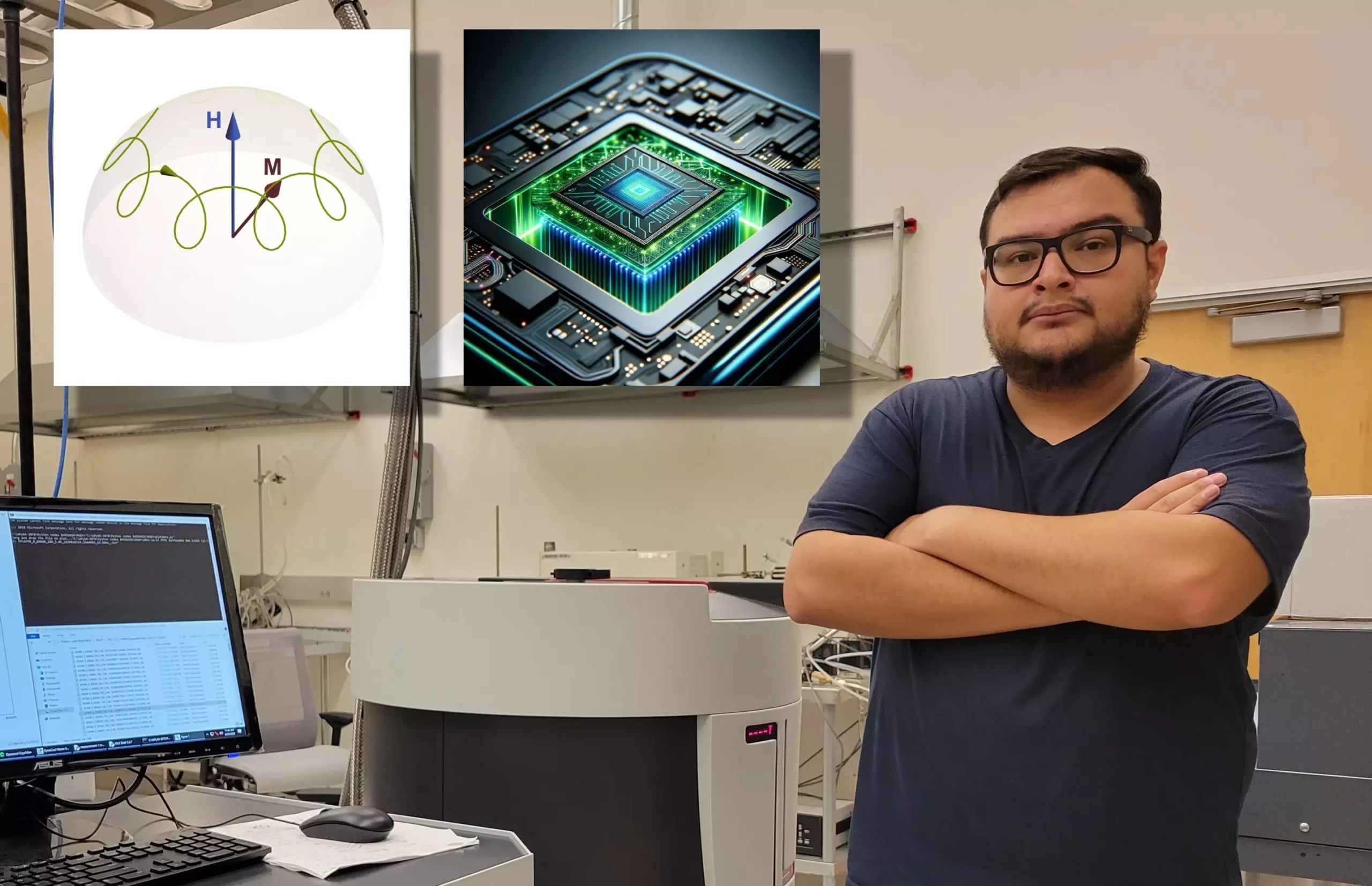In the realm of technological advancements, researchers are constantly striving to push the boundaries of what is possible. A recent breakthrough in the field of spin behavior in ferromagnets has opened up a whole new world of possibilities for ultra-high frequency applications. This research, led by a team at the University of California, Riverside, could potentially revolutionize the way we approach communication and computation technologies in the future.
Ferromagnets are materials where electron spins align in the same direction, creating what are known as “spin waves.” These spin waves play a crucial role in processing information and signals in emerging computer technologies. However, it was found that these spins also oscillate around their direction, leading to the discovery of a new type of oscillation called nutation. This nutational oscillation occurs at ultra-high frequencies, making it highly desirable for future technologies.
Spin inertia introduces a second time-derivative in the equation of motion, resulting in some counterintuitive phenomena. Researchers were able to harmonize spin-current-driven dynamics and spin inertia, paving the way for exciting developments in the field. By injecting a spin current with the “wrong” sign, nutational auto-oscillations were triggered, holding great promise for next-generation computation and communication technologies.
In addition to ferromagnets, ferrimagnets have also garnered interest due to their unique properties. These materials consist of two antiparallel spin lattices with an unequal amount of spin. While there are still technological challenges to overcome, the recent advancements in spin currents and materials engineering have positioned ferromagnets as excellent candidates for ultra-high frequency applications.
The groundbreaking research conducted by the team at the University of California, Riverside, has highlighted the vast potential of ultra-fast spin behavior in ferromagnets. By harnessing the power of nutational auto-oscillations and exploring the synergies between different types of magnets, the future of communication and computation technologies looks brighter than ever. As we continue to delve deeper into the world of spintronics, the possibilities are truly endless.


Leave a Reply